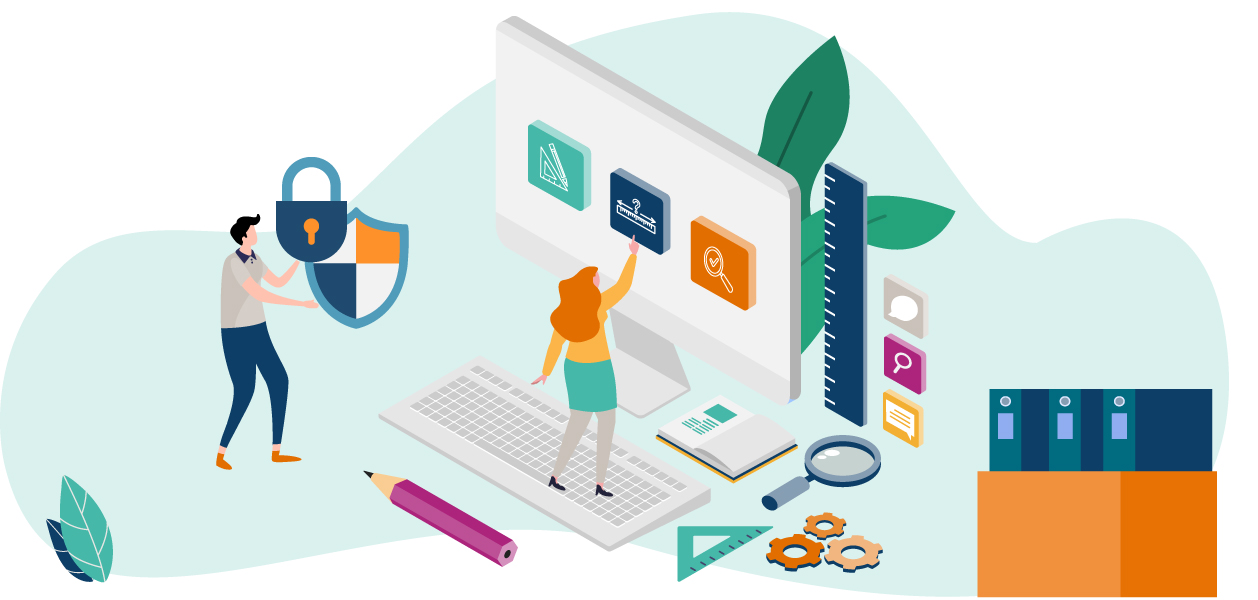
Blockchain and Internet of Things: Applying advanced technologies in evaluation
New technologies come with a promise – helping people and creating efficiencies. Let’s look at some innovative data methods that can do just that in evaluation. At the end of this piece, you’ll know some of their potential uses and feel inspired and equipped to dig deeper. .
While there are many tech solutions out there, let us focus on three: Internet of Things (IoT), Natural Language Processing (NLP), and Blockchain Technology (BT).
These three technologies all offer one or more solutions to common evaluation challenges, including resolving biases in data collection and analysis, reducing repetitive manual tasks and building confidentiality and trust among participants.
While these technologies all show promise, they have different levels of maturity. A familiar example is the home electronics industry. It has widely capitalised on the now-mature Internet of Things – that’s how we now live in homes with lights, security, and pet cameras controlled by apps and connected through wifi and Bluetooth. On the other hand, Blockchain Technologies is quite niche and only in its infancy considering its potential.
We’ll work our way from technological applications that can be used by most of us as they are today, towards solutions that require skills outside the regular evaluation realm.
Internet of Things – data instantly or anonymously
Internet of Things devices connect wirelessly to a network and transmit data to other devices. Think fitness watches, manufacturing equipment that tracks and communicates wear and tear and vehicle trackers that send alerts if movements compatible with a collision are detected.
These types of devices offer evaluators options for data collection. One of the great opportunities with Internet of Things is automated self-reporting. It’s well known that people overestimate or underestimate their activities to align better with desired behaviour or norms when they self-report.
Knowing that self-reported evidence can be inaccurate, a device that is continually collecting data can be a great asset. Enter the smartwatch. These devices fall in the category of IoT devices that are linked to an account.
The data is unbiased and requires no manual entry. Once collected, estimates can be made about physical and mental well-being based on heart rate, steps or even sleep quality.
Where there is a preference for immediacy and anonymity, a different type of device can come in handy.
Feedback devices like these are widely used in airports. The device is accessible to anyone, and participants are only one click away from submitting feedback. This is the type of IoT device that is not connected to an account.
It can be especially valuable when we know that each additional click reduces the response rates in surveys. Another potential use is when it’s necessary to avoid the risk of bias an in-person interview brings to the data collection. The feedback device could be equipped with audio capabilities to give prompts and record stories.
Natural Language Processing – your workhorse for qualitative data
The second solution is Natural Language Processing. It’s a subfield of linguistic and data science. It offers a way to automate and optimise the analysis of qualitative text. Not only that, sub-families of NLP like topic modelling and sentiment analysis also allow us to extract key insights from text and identify the emotional tone.
This technology is currently used by companies to comb through their customer service chat logs with sentiment analysis to determine how well they are handling complaints. It also serves brands listening to chatter about their products on social media to determine if their new release was a success or a flop.
Interview transcripts are a central source of information in evaluation. Extracting topics and sentiments is time consuming and draining.
Natural Language Processing can uncover abstract topics and reduce the time needed for analysis. While the result isn’t perfect, it can support and speed up the manual analysis. It can shortlist negative responses or highlight topics that can create a base for categorising entries. If you want a quick overview of extensive material, it can be especially useful.
Pre-trained libraries for NLP are available, as are free and open-source solutions that can be combined to offer the right kind of analysis for each individual project.
Blockchain Technology – empowering data ownership structures
Blockchain Technology is a ledger for recording transactions and tracking assets in a business network. The ledger is shared and immutable, so chains of asset ownership are tamper-proof. It’s essentially a trust mechanism. An asset can be tangible (a house, car, cash, land) or intangible (intellectual property, patents, copyright, branding).
It’s used in cryptocurrency, and potential uses are being explored for other types of payments, logistics, identity verification and tracking the provenance of art.
This third solution is more of a paradigm shift for a future where data ownership is front of mind.
I suggested that, in a future with the right technology and environment, we could explore Blockchain Technology in evaluation to let participants control and manage access to their own data.
There would be no central entity with access directly to the data, each person could manage who can access it and when. For surveys, participant answers would be automatically anonymised.
Although Blockchain Technology has a way to go before it is viable for this type of application, it answers the question of ‘how’ we could increase trust when sensitive data is shared.
Challenges
In this piece, we explore the opportunities that lie in advanced technologies. As always, bias, ethics and accessibility are present as challenges in the Measurement, Evaluation and Learning space.
Two questions we keep front of mind as we forge ahead:
Are we reducing bias rather than reproducing it through technology?
Can we use this technology to include rather than exclude vulnerable communities?
Got an inkling advanced technology could enhance your impact measurement? Contact us to explore how your options.









